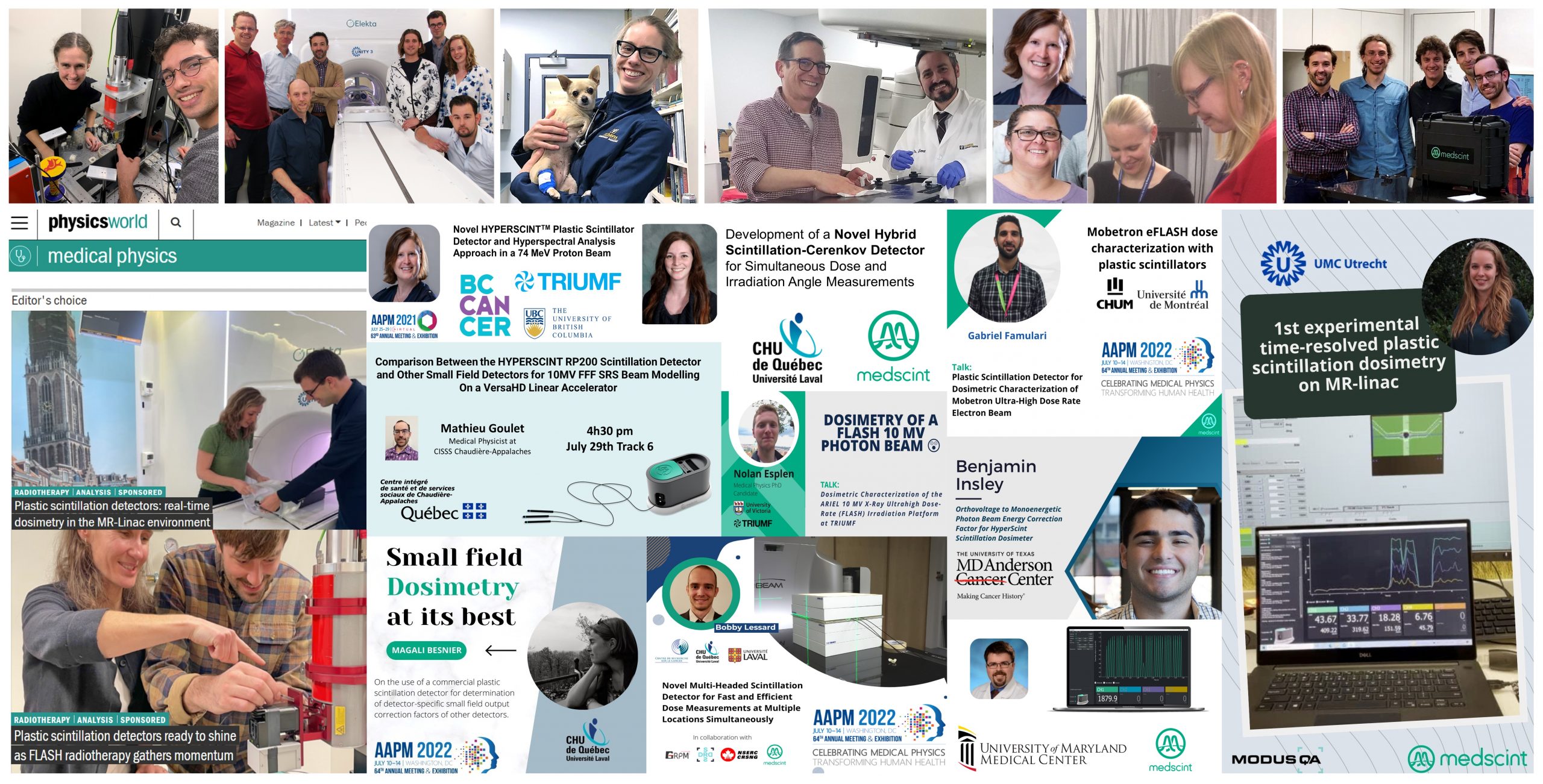The goal of this work is to determine small field output correction factors of various detectors using the HYPERSCINT plastic scintillation detector as a reference and to compare values with current available data. The simple and well understood composition and geometry of the scintillation detector make it ideal to be used as a reference detector for the evaluation of field output correction factors. Field size dependent correction factors have been extracted for different detectors and show limited discrepancies with current available data. This may potentially be attributed to inter detector variability or other methodological uncertainties in published data.
2022 AAPM ANNUAL MEETING
M.Besnier (1), F.Beaulieu (1), F.Berthiaume (1,2), Y.Cervantes Espinosa (1), B.Côté (2), S.Lambert-girard (1,2), D.Leblanc (1,2), Y.Lechasseur (2), F.Therriault-Proulx (2), L.Archambault (1), L.Beaulieu (1), L.Gingras (1) | 1- CHU de Quebec – Universite Laval, QC, Canada, 2- MEDSCINT, QC, Canada
